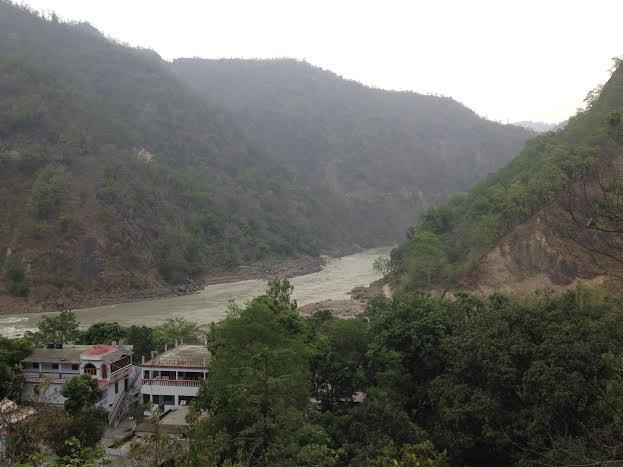 Image
Image
Under-reporting Biodiversity: Clear and Present Danger
Media has not been able to keep aside its circulation arithmetic and assign enough space to this critical topic---Biodiversity, reports Jayalakshmi Sengupta for IBNS humanitarian and development news service Just Earth News
Famine in Sub-Saharan Africa does not make for pleasant news, but fortunately it does not affect us directly. Neither do the rising deaths of the penguins in the Antartica. Closer home, some of the recent headlines also fail to evoke the desired reaction for the same reason:
Feb 17, 2016: ‘Chhattisgarh Govt. cancels tribal rights over forests to facilitate coal mining’
June 10, 2016: ‘After Bihar's Nilgai culling, HP announces plan to start culling Shimla's 2500 Monkeys’
Yet these stories have a vital link to our existence. They are all, in fact, pointers to a devastatingly challenging era when all debates on development versus conservation are to be about bitter survival. But where, increasingly, we stand to lose more than we gain, if we think only about ourselves.
And so, as Odisha’s resource-rich Sukinda valley coughs up lungful of polluted air today, Chhattisgarh will be left to lick its own deep wounds, perhaps never to be healed. After neelgais and monkeys, a far more severe vermin epidemic, from rodents to other venomous creatures, is likely to endanger our peace. Their natural habitats destroyed they will have no option but to invade the urban landscape; and in the absence of their natural predators, they shall necessarily proliferate, much to our agony.
These are issues that cannot be wished away. Their solutions though simple are not being deliberated upon with the urgency they should be, not because there is a lack of understanding about them but because they a little removed from the urban reality. Media too has not been able to keep aside its circulation arithmetic and assign enough space to this critical topic---Biodiversity.
.jpg) For instance we are all aware of how an average Indian today is exposed to more particulate matter than the average Chinese citizen. We are, however, not aware that India's carbon sink (anything absorbing more CO2 than it releases), crucial in the current need to reduce carbon dioxide from the air, has actually increased by 103 million tonnes to 7044 million tonnes in 2015, with the marginal increase in forest cover that it has seen over the last few years. Which is great news, but it is not enough to contain the vast imbalance in nature that has already set in.
For instance we are all aware of how an average Indian today is exposed to more particulate matter than the average Chinese citizen. We are, however, not aware that India's carbon sink (anything absorbing more CO2 than it releases), crucial in the current need to reduce carbon dioxide from the air, has actually increased by 103 million tonnes to 7044 million tonnes in 2015, with the marginal increase in forest cover that it has seen over the last few years. Which is great news, but it is not enough to contain the vast imbalance in nature that has already set in.It is indeed a blessing that India is one of the world's 17 ‘megadiverse’ countries with 200 eco regions. Though a rising percentage of flora and fauna are on the verge of extinction, mainstreaming biodiversity for conservation can still generate a sustainable livelihood for those who depend on the soil. It can also influence climate change dramatically. Beyond the rights of a few animals or that of a handful of people; or debates on the destiny of a river, a valley or a forest, flora or fauna, this is a holistic approach, intrinsically linked with sustainable national economy and that of our well-being.
The outcome of such conservation is phenomenal. According to the interim report of The Economics of Ecosystem and Biodiversity: India Initiative (TEEB-India, the value of sustainable harvesting of the ecosystem from one single district in Karnataka per hectare per year is a whopping Rs 252,696,.
This means over 700 million Indians, directly at risk due to climate change and the consequences of frequent and severe droughts, floods and storms, can change this equation if they create a blueprint of conserving biodiversity.
‘Equitable sharing of benefits, emerging from the sustainable use of these ecosystems, is being seen an important goal to pursue today,’ claims Dr Amita Prasad Additional Secretary, Ministry of Environment, Forests and Climate Change (MoEFCC).
‘Equitable sharing of benefits, emerging from the sustainable use of these ecosystems, is being seen an important goal to pursue today,’ claims Dr Amita Prasad Additional Secretary, Ministry of Environment, Forests and Climate Change (MoEFCC).
Consequently, State Biodiversity Boards (SBBs) have been established under National Biodiversity Authority (NBA), with more than 38,000 biodiversity management committees (BMCs) with panchayat bodies.
The main function of the BMC has been to prepare People Biodiversity Registers (PBRs) in consultation with the local people. The register is to contain comprehensive information of the local resources, their medicinal and other usage associated with them, to help the locals come up with sustainable livelihood programmes around them. ‘So far 3000 PBRs in 17 states have been established,’ said Dr B Meenakumari, Chairperson NBA. Maximum of these are in MP and Kerala.
.jpg) National, state and local level biodiversity funds have also been established for the conservation and promotion of these resources. All grants, loans and royalties received by the NBA shall accrue to theNational biodiversity fund (NBF). Similarly, all sums received by SBB will be part of State biodiversity fund. While the SBF shall be used for the management and conservation of heritage sites, compensating or rehabilitating any section of the people economically affected by notification, apart from conservation activities, the local biodiversity fund will be used to document and manage the local resources.
National, state and local level biodiversity funds have also been established for the conservation and promotion of these resources. All grants, loans and royalties received by the NBA shall accrue to theNational biodiversity fund (NBF). Similarly, all sums received by SBB will be part of State biodiversity fund. While the SBF shall be used for the management and conservation of heritage sites, compensating or rehabilitating any section of the people economically affected by notification, apart from conservation activities, the local biodiversity fund will be used to document and manage the local resources.
It shall be incumbent upon the State Governments to notify biodiversity heritage sites, with the help of local people, and apart from management and conservation, launch schemes for compensation and rehabilitation of affected people. Heritage sites are well defined areas that are unique, ecologically fragile terrestrial coastal and inland water and marine, having rich biodiversity.
Meanwhile, Biodiversity Finance Initiative (BIOFIN), a global partnership piloted in 31 countries, will build on the work done by the MoEFCC. It will determine the funds available and develop a resource mobilisation strategy. Of the 200 eco regions in India, the pilot initiative in India has begun in the Himalayans and the Western Ghats, two biodiversity hotspots..
The Access Benefit Sharing (ABS) strategy where the community stands to benefit from all its activities will need to be monitored and in the coming months hopefully more stories from the local communities will help us access the situation on ground. ‘India is ready to be audited’, announced Dr Amita Prasad
Meanwhile, we need to thank Rajasthan and its increasing forest cover for the reduction in Delhi’s dust haze this year. And that is as simply as it can be put. We need to embrace the web of life, woven by the diversity of animals and plants and fight this battle for all of us from now.
A prophecy of the Cree Indians: “When the last tree is cut down, the last fish eaten and the last stream poisoned, you will realise that you cannot eat money.”
(Just Earth News)
The main function of the BMC has been to prepare People Biodiversity Registers (PBRs) in consultation with the local people. The register is to contain comprehensive information of the local resources, their medicinal and other usage associated with them, to help the locals come up with sustainable livelihood programmes around them. ‘So far 3000 PBRs in 17 states have been established,’ said Dr B Meenakumari, Chairperson NBA. Maximum of these are in MP and Kerala.
.jpg) National, state and local level biodiversity funds have also been established for the conservation and promotion of these resources. All grants, loans and royalties received by the NBA shall accrue to theNational biodiversity fund (NBF). Similarly, all sums received by SBB will be part of State biodiversity fund. While the SBF shall be used for the management and conservation of heritage sites, compensating or rehabilitating any section of the people economically affected by notification, apart from conservation activities, the local biodiversity fund will be used to document and manage the local resources.
National, state and local level biodiversity funds have also been established for the conservation and promotion of these resources. All grants, loans and royalties received by the NBA shall accrue to theNational biodiversity fund (NBF). Similarly, all sums received by SBB will be part of State biodiversity fund. While the SBF shall be used for the management and conservation of heritage sites, compensating or rehabilitating any section of the people economically affected by notification, apart from conservation activities, the local biodiversity fund will be used to document and manage the local resources.It shall be incumbent upon the State Governments to notify biodiversity heritage sites, with the help of local people, and apart from management and conservation, launch schemes for compensation and rehabilitation of affected people. Heritage sites are well defined areas that are unique, ecologically fragile terrestrial coastal and inland water and marine, having rich biodiversity.
Meanwhile, Biodiversity Finance Initiative (BIOFIN), a global partnership piloted in 31 countries, will build on the work done by the MoEFCC. It will determine the funds available and develop a resource mobilisation strategy. Of the 200 eco regions in India, the pilot initiative in India has begun in the Himalayans and the Western Ghats, two biodiversity hotspots..
The Access Benefit Sharing (ABS) strategy where the community stands to benefit from all its activities will need to be monitored and in the coming months hopefully more stories from the local communities will help us access the situation on ground. ‘India is ready to be audited’, announced Dr Amita Prasad
Meanwhile, we need to thank Rajasthan and its increasing forest cover for the reduction in Delhi’s dust haze this year. And that is as simply as it can be put. We need to embrace the web of life, woven by the diversity of animals and plants and fight this battle for all of us from now.
A prophecy of the Cree Indians: “When the last tree is cut down, the last fish eaten and the last stream poisoned, you will realise that you cannot eat money.”
(Just Earth News)
Top Headlines
-
News
CSR in the Crossfire: Professor and practitioners debate over ethics in India Inc. at Kolkata's MCHD talk
October 24, 2025
-
News
Jashanpreet Singh Case: California under fire for licensing undocumented truck driver
October 24, 2025
-
News
India upgrades Technical Mission in Kabul to Embassy, days after Muttaqi's visit to New Delhi
October 22, 2025
-
News
Pakistan, Afghanistan agree to 48-hour ceasefire after deadly border clashes
October 15, 2025
-
News
Afghan Taliban, Pakistan exchange gunfire, dozens killed
October 15, 2025
-
News
Trump hails Netanyahu in Israel after hostage release, declares historic dawn of a new Middle East
October 13, 2025
-
News
Historic dawn of a new Middle East: Donald Trump addresses Israeli Parliament
October 13, 2025
-
News
Shah Rukh Khan receives maiden National Award from President Droupadi Murmu
September 23, 2025
-
News
Kolkata: Ahiritola Yubak Brinda invites Auram to make jewellery for Ma Durga and her family
September 20, 2025
-
News
Israel-US alliance 'never been stronger', Netanyahu says as State Secretary Rubio visit for talks
September 15, 2025





